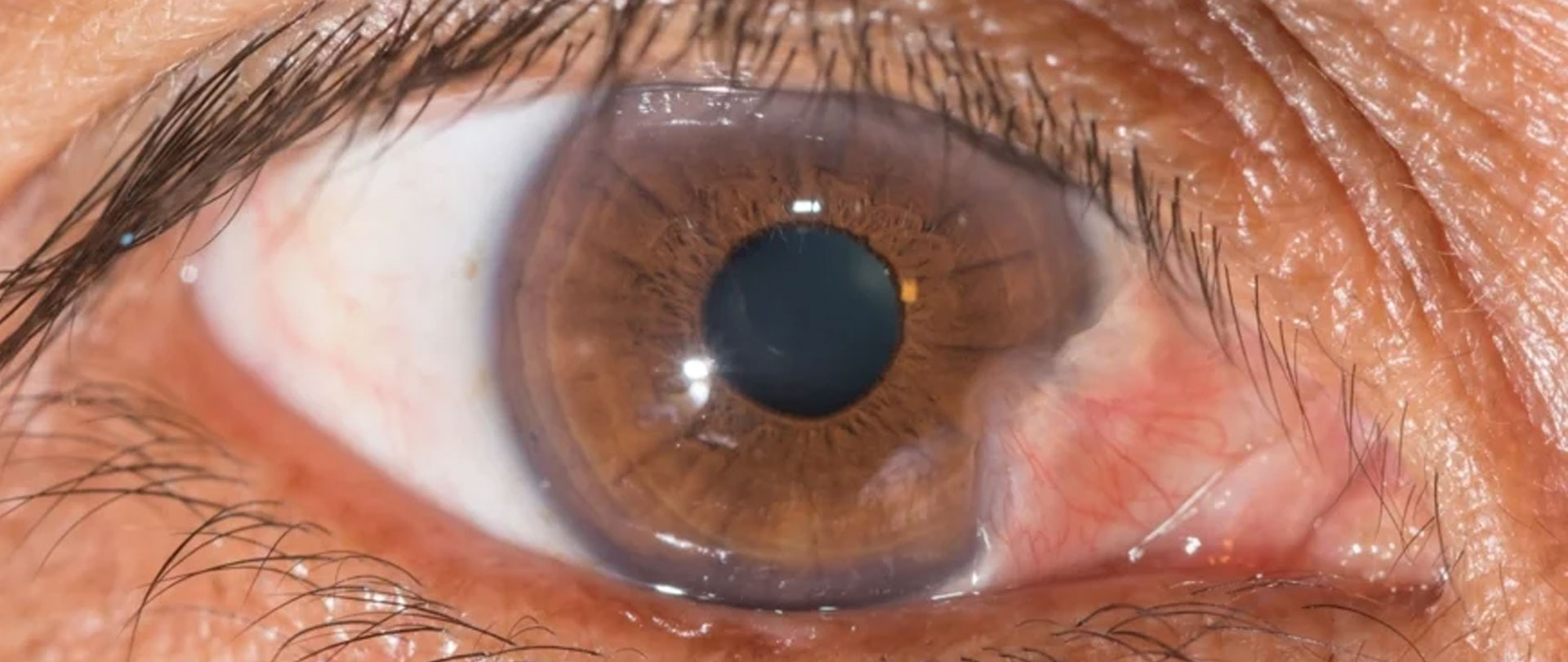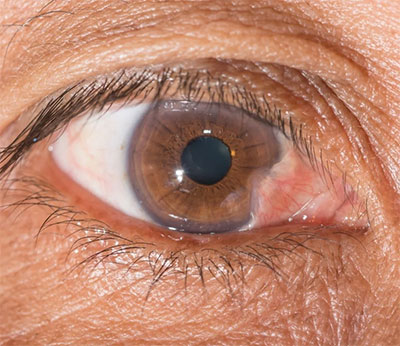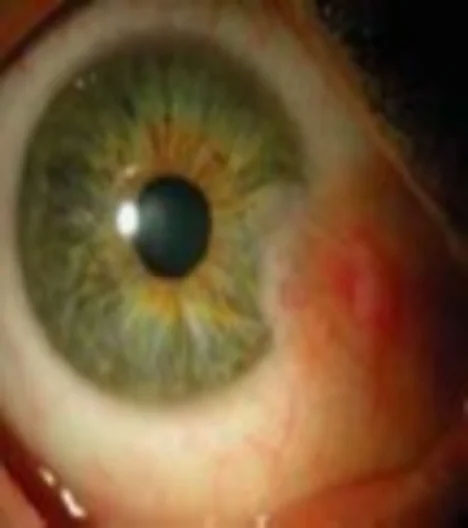
Pterygium (pronounced tur-IJ-ee-um) is an abnormal tissue growth that extends from the corner of the eye toward the center of your eye.
Pterygium (pronounced tur-IJ-ee-um) is an abnormal tissue growth that extends from the corner of the eye toward the center of your eye. The appearance of a pterygium can vary from a small, almost unnoticeable tissue mass to a large, red, noticeable and irritating growth.
Download a pamphlet about AMNIOGRAFT®Protecting your eyes from prolonged sun exposure is the best prevention method. When outdoors, wear a hat with a brim and UV coated sunglasses to block the sun’s harmful UV rays. These precautions are even more important if you live in a tropical or subtropical area, if you work outside, or if you participate in outdoor activities like fishing, skiing, or gardening.
It is possible that a patient with a pterygium has no symptoms at all. Other patients have a variety of symptoms including redness, swelling, itching, irritation, and blurred vision. Vision can be effected if the pterygium grows to cover the center of the eye or if the irregular tissue grows and restricts the eye’s movement.

Treatment depends on the symptoms. You can treat symptoms with over the counter artificial tears or topical lubricating drops and/or ointments. Your doctor can also prescribe short-term use of topical corticoste anti-inflammatory drops when symptoms are not relieved by over the counter medications. It is also wise to protect your eyes from UV rays. If over the counter and prescription medications do not alleviate your symptoms or if you want a better cosmetic appearance, a pterygium can be surgically removed.
Your pterygium can be surgically removed in an outpatient setting under local or topical anesthesia. Your surgeon will remove all of the pterygium tissue from the surface of your eye. In order to help the area around the pterygium heal, your surgeon will treat the surface of your eye by covering the area where the pterygium was removed with AMNIOGRAFT®.


Your doctor has chosen to use AMNIOGRAFT® because the physical properties of AMNIOGRAFT® are similar to the tissue that covers the white of your eye, but AMNIOGRAFT® has therapeutic actions that help reduce scarring, minimize inflammation, reduce pain and improve the cosmetic outcome.
Cryopreserved amniotic membrane (AMNIOGRAFT®) is the only amniotic membrane tissue that aids in ocular surface wound repair and wound healing. The natural properties of the tissue have been proven to reduce scarring, reduce abnormal blood vessel formation, reduce pain and aid in healing. When AMNIOGRAFT® is used in pterygium surgery, patients have less pain and an improved cosmetic outcome when compared to patients treated with other pterygium excision procedures.
AMNIOGRAFT® is a safe, effective treatment provided by a tissue bank regulated by the FDA. The tissue has passed quality control steps before being released for use. Ask your doctor if you have any questions about the risks of receiving human tissue transplantation.
After surgery, the eye may be patched overnight. Topical antibiotic and anti-inflammatory drops and/or ointments will be used to minimize the inflammation and help with the healing. Your doctor will monitor your healing and advise you how often to use the drops and/or ointments. There may be some discomfort during the first few days after surgery, but you will be able to resume full activity within 48 hours. The eye will heal within two to three weeks.
